Elvis Is Alive
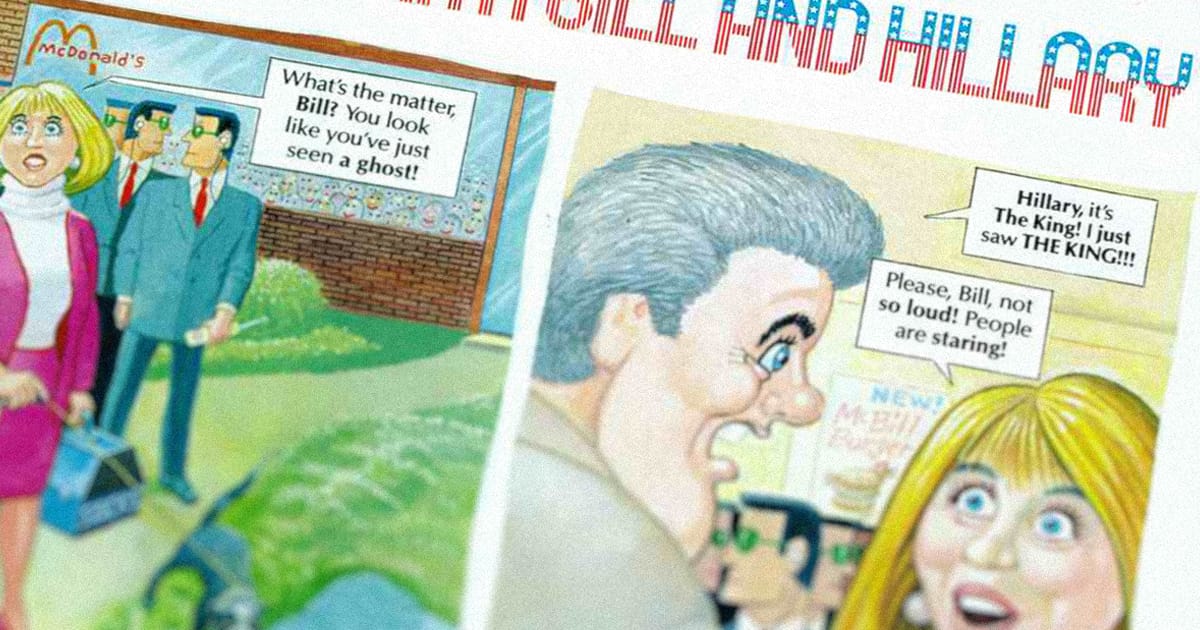
The Setup
“5. Elvis Is Living in My Bunker (Baghdad Enquirer)”
– From David Letterman’s “Top 10 Headlines in Today's Baghdad Newspapers,” February 1, 1991
Elvis Presley suffered a ghoulish revival in the late 80s that detached him completely from his career as a musician. The conspiracy that he was still alive had taken hold in the American psyche, breaking out from the underground into mainstream coverage. This story blew up so much that comedians everywhere virtually stopped writing new jokes. “Elvis is alive” became such a ubiquitous comedy topic that proper jokes stopped being necessary: just his name or appearance would serve in a pinch.
Some readers probably remember these jokes, but I assume fewer remember where they started. In 1987, a woman claimed to have spotted Elvis at a Burger King in Kalamazoo. Elvis death conspiracies were not new, but this specific story took on a national prominence that is hard to fathom now. I can’t overstate how much the American media cared about this stuff, with nonstop coverage in the sensational world of tabloids and daytime talk shows as well as ostensibly serious news media. It’s a fascinating topic in its own right. We’re here, however, to talk about the jokes.
And, good lord, the jokes. You could not escape them. The topics covered on this blog, by their nature, became clichés. “Elvis is alive” is in contention for the most beaten to death horse in comedy history.
A casebook example: a 1988 sketch where Johnny Carson interviews Elvis via satellite from a cabin in Bismarck, North Dakota. There is a detail here that was important in early jokes but gets lost over time: Elvis was spotted in Kalamazoo, an obscure town with a funny name, and so living in Bismarck makes fun of that.

The sketch does not otherwise have a lot going for it. Elvis answers questions about his life, verifying himself as the real Elvis, before the punchline that a “PP” carved in a Graceland tree is not a reference to his wife Priscilla but to piss—because he drank a lot of beer. In reality, Elvis was not a drinker, but he was made fun of for overindulging and (if there’s one thing anybody knows about Elvis) for being fat.
This sketch highlights an immediate problem with the Elvis conspiracy jokes: they were already clichés. Comedians dusted off bits from over a decade prior, reusing the same jokes they told when Elvis was alive. Prop department boxes labeled “Rhinestone Capes and Huge Sunglasses” were given an improbable second life. Surely the ease of telling these jokes, of reaching into bags of tricks already owned and practiced, was part of the appeal for comedians.
The sitcom Married…with Children aired an entire episode about Elvis titled “I'm Going to Sweatland.” The Bundy family tries (and fails, naturally) to capitalize off Elvis mania after Peggy spots Elvis and then later Al leaves a prophetic sweat stain in the shape of Elvis’s head.
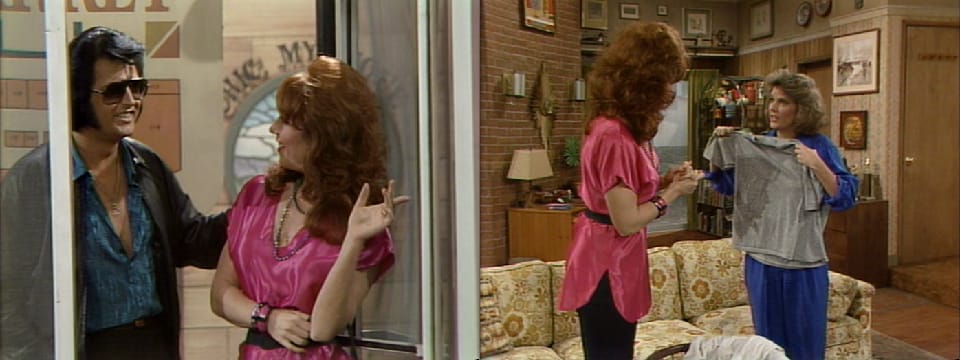
The episode is boilerplate Elvis comedy. Peggy tells a story about Elvis eating pepperoni pizza (that fat piece of shit!), and the Elvis chasers eventually move on after Elvis is spotted in Youngstown, Ohio “buying quarter-inch lugnuts”–again, an emphasis on Elvis’ quirky, small-town haunts. The episode is more notable for being written and filmed and broadcast by November 1988. The Elvis industrial complex was moving quickly. We’re not even tickling the 90s yet.
The following years defy summary. Elvis jokes saturated the media landscape, whether TV, magazines, standup, comic strips, video games, and on and on and on. No amount of examples can capture how often you would hear an Elvis joke or just see Elvis as if he was a priori hilarious. The phenomenon itself became a punchline.
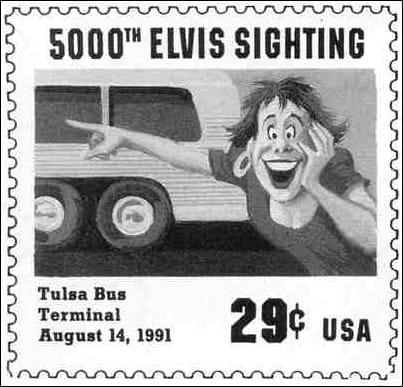
If it’s possible to summarize the ubiquity of Elvis jokes, perhaps this will do. I present every Ziggy comic about the topic, eleven in total, all virtual duplicates of each other. The most recent of these, preposterously, is from the year 2021. This is not a full accounting of every Ziggy comic about Elvis, just those specifically about Elvis being alive.
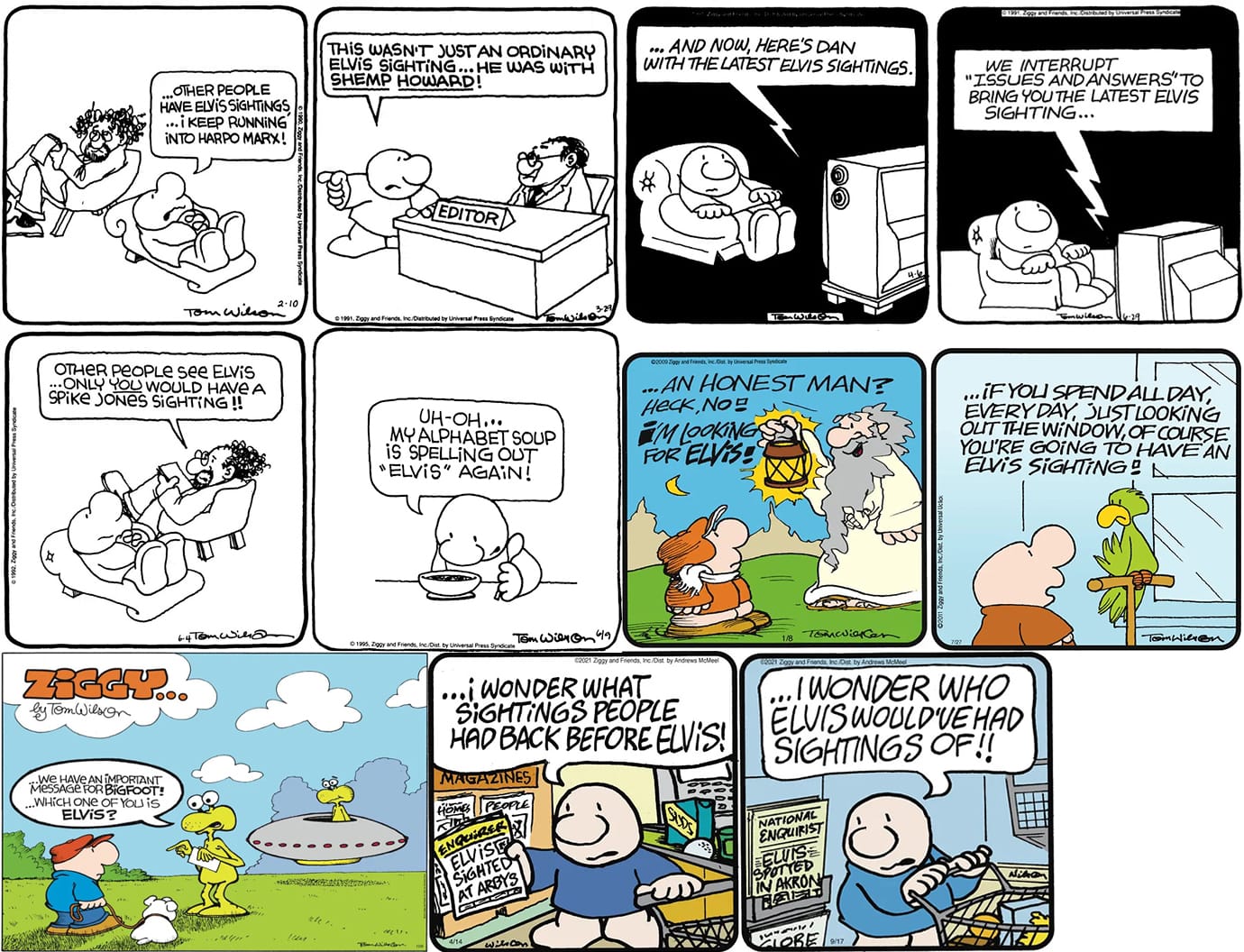
Now that I think about it, maybe there’s some value in a measurement of joke saturation by number of Ziggy mentions. Let’s call it the Ziggy Index. Nobody steal this idea.
The Punchline
“Elvis is alive” was never about Elvis. Early on it was much more about the tabloid era, of magazines and TV shows that published sensationalized news on purpose. Elvis sightings became shorthand for delusional, conspiratorial fanbases, and often the focus was as much on Elvis’s weird followers as the man himself. Jay Leno visited the "Church of Elvis” in a 1995 Tonight Show segment where the punchline was little more than “Look at these freaks.” The details that defined these jokes at first, the sightings and cover-ups, had faded. Now comedians just made fun of those deemed eccentric. Leno literally smirks at the camera, failing to understand the Church of Elvis is a deliberately funny art installation.

The Church of Elvis was far from the only "funny on purpose" Elvis commentary out there. Some magazines did purport to be real (if celebrity-focused) journalism or were trying to sell fake news to credulous readers. But the Weekly World News, for example, was always satirical. I myself enjoy this cover where the writers take the gag to its inevitable conclusion: killing Elvis off again.
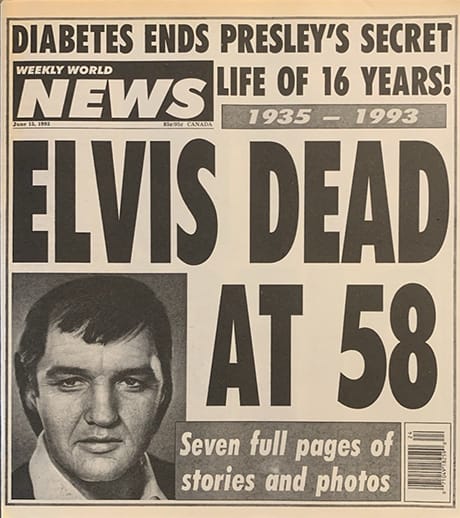
Much of the discussion about Elvis being alive was self-aware fun. People weren’t stupid–they liked the story because it was silly. I think it did, however, indulge a certain fantasy: you are a savvy media viewer laughing at an absurd story, other people are gullible nutjobs.
If these jokes were never about Elvis, he was nonetheless the perfect subject. He was a genuine superstar in life with an iconic appearance, legendary catchphrases, a distinctive manner of speech, and maybe most importantly a short, single name that is instantly recognizable. Apologies to Mr. Costello, but nobody is ever going to ask “Which Elvis?”
Even young children know Elvis when they see him. Garfield met Elvis in a 1993 Garfield and Friends episode where Jon tries to capture evidence of a bigfoot-style creature. (At one point, Jon references a book titled Legends and Mysteries from his own bookshelf, suggesting the Arbuckle family has occult interests.) Elvis serves as the punchline to the episode, and let’s be honest: it’s a pretty awful rendition of Elvis.
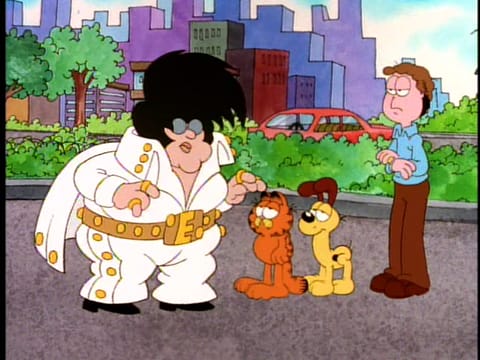
But it doesn’t need to be good. Even the loosest sketch of Elvis is still Elvis. Anybody can do an Elvis impersonation that reads as Elvis. And even the briefest mention of Elvis evokes his whole persona. Elvis became a fantastic timesaver for comedians who needed a punchline that did a lot of heavy lifting, no matter the medium. This 1990 Jeff Dunham act from The Tonight Show and this 1992 FoxTrot strip feature the exact same punchline.

Elvis would eventually be melted down into less than a joke, more a signifier of comedy, a rubber-chicken-style joke qua joke. He was no longer a real musician who once lived but an abstract celebrity who is now dead.
Before I go, I should admit that I’m being unfair to Jeff Dunham here, who (if you don’t know) is a ventriloquist who became famous for using racist puppets to tell hacky jokes. The “I see Elvis” line above did get a polite chuckle from the Carson audience he was playing for, but I cut off his actual punchline:

If Jeff Dunham of all people is telling you that a joke has been beaten to death, you know it’s gone too far.
Background reading
Denisoff, R. Serge. True Disbelievers: The Elvis Contagion. 1995.